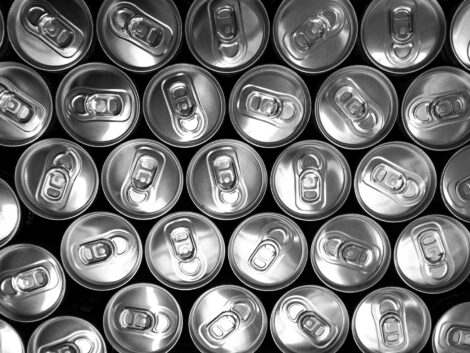AMP and Crown fund can capture grants
Aluminium beverage can manufacturers Ardagh Metal Packaging and Crown Holdings are funding a new grant opportunity as part of their continuing support of activities to spur the installation of additional aluminium can capture equipment in material recovery facilities (MRFs), which sort single-stream recyclables.
This new grant opportunity builds on the five grants that Ardagh and Crown funded in 2021.
Facilitated by the Can Manufacturers Institute (CMI), the five grants given in 2021 to MRFs across the US exceeded expectations.
The initial estimate was these five grants would fund equipment that when installed would annually capture 71 million aluminium beverage cans, generating a little more than $1 million in revenue for the US recycling system.
Recent performance data from four of the five grantees shows the impact is even higher—nearly 140 million aluminium beverage cans captured per year.
“Ardagh and Crown are generously funding recycling system improvements with significant environmental and economic impacts,” reported Scott Breen, CMI’s vice president of sustainability.
“CMI’s can recycling impact calculator shows when the nearly 140 million aluminium beverage cans are captured and recycled each year due to the improvements from these grants, the annual impacts are more than $2 million generated for the recycling system and carbon savings realised equivalent to driving a little more than 34 million miles, or nearly 1,400 times around the Earth.”
As with the 2021 grants, the new grants will be offered through The Recycling Partnership, the leading national force for improving recycling. Several grants will be awarded on a rolling basis to MRFs.
More information on the grant opportunity can be found at https://recyclingpartnership.org/aluminum-can-capture-grants-for-mrfs/.
“Capturing each aluminium beverage can at MRFs is important since metal recycles forever and used beverage cans (UBC) are consistently one of the most valuable materials in the recycling stream,” said John Rost, Crown’s vice president of global sustainability and regulatory affairs.
In fact, CMI-funded research from Gershman, Brickner & Bratton, “Aluminum Beverage Cans: Driver of U.S. Recycling System,” found that without the revenue from UBCs, most MRFs would not be able to operate without changes to their business models.
This same research found that up to one in four aluminium beverage cans is missorted at a typical MRF for various reasons including cans being crushed horizontally into flat objects and then sorted like paper.
The extent of the incorrect sorting of aluminum beverage cans varies by MRF. In 2022, Ardagh and Crown contracted Resource Recycling Systems (RRS) to track exactly how many aluminium beverage cans are missorted at five loss points at three diverse MRFs.
This on-the-ground analysis found that between seven and 36 aluminium beverage cans are missorted every minute, resulting in an average annual revenue loss of $71,900 per loss point. With the relatively high economic value of UBCs, can capture equipment at these loss points had an average payback of three years.
Beyond the testing and the funding, Ardagh and Crown also financed the development of tools to catalyse additional can capture equipment installation. In 2022, CMI made available a complimentary return-on-investment (ROI) calculator, developed by RRS, that any MRF can use to see the ROI of putting in additional can capture equipment.
“Ardagh is proud to join Crown and continue investing in can sorting efficiencies at MRFs to strengthen aluminum beverage can recycling,” said Jennifer Cumbee, Ardagh’s chief sustainability officer, global metal.
“These investments reflect our industry commitment to increase beverage can recycle rates as CMI detailed in our Aluminum Beverage Can Recycling Primer and Roadmap.
“The objectives and tactics are clear as CMI aluminium beverage can sector members are aligned in improving from a 45% aluminium beverage can recycling rate in 2020, which makes it the most recycled beverage container in the United States, to new heights of 70 percent by 2030, 80 percent by 2040 and 90 percent by 2050.”








